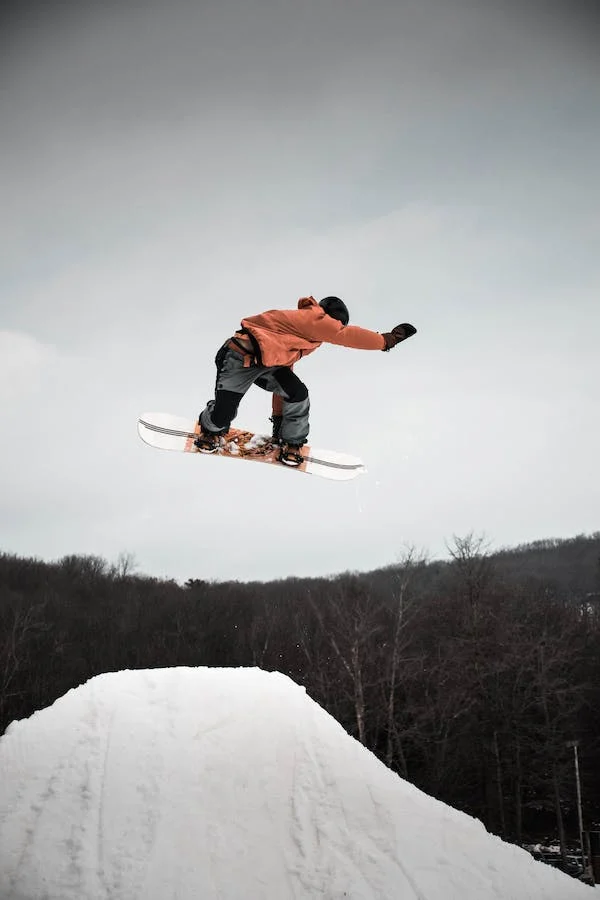Ski jumping is a game in which the competitor aims to have the longest jump over a specially constructed ramp. The athlete’s style and other factors contribute to the overall scoring as well. Ski jumping is one of the most well-known and recognizable winter games.
All around the world, 25 to 30 competitions of ski jumping are organized throughout the year. Speed, balance, and flight are the three official directions of ski jumping. To have a higher flying, the competitor must make a proper run-in, and sustain the speed and his balance. Read further to find out more about ski jumping so there won’t be a need to buy an essay online about it.
Ski Jumping is a winter sport, but it is played in summer as well. For ski jumping in winters, tracks are made on icy hills, whereas in summers, the tracks are made up of artificial plastic. The track steeps on two levels. Ski jumping is a dangerous game;hence appropriate measures are taken for the safety of athletes and to minimize adverse effects.
In ski jumping, the athlete has to get more points from the judges than other competitors. They must lower down to the specially designed ramp until they ultimately reach the end ramp. From the end ramp, the athletes ski off. And then every participant strives to fly as far as possible along with the air. After this, the participants have to land on the sharp sloped hill.
History of Ski Jumping
Ski jumping was emerged from Morgedal, Norway, and can be traced back to the time when SondreNorheim won the first ski jumping competition. SondreNorheim won this competition in 1866, which was held at Ofte, Høydalsmo, Norway. SondreNorheim jumped the distance of 30 meters without a pole and is known as the “Father of ski jumping.”
Husebyrennetwas the first considerablyrecognized ski jumping competition, held in 1879, in Oslo. From 1892, the annual event of ski jumping was shifted to Holmenkollen. After the development of the KongsbergerTechnique by Sigmund Rudd and TullinThams, the next big event of ski jumping took place.
Kongsberger Technique is a ski jumping style, in which the skier bends his upper body at the hips, inclining ahead at a wide-angle with arms stretched forward. With the help of this technique, the ski jumpers increased the distance, resulting in the transformation in ski jumping methods.
Since the first Olympic Winter Games, which was held in Chamonix Mont-Blanc in 1924, ski jumping became an integral part of the Olympic Winter Games. In the Olympic program for the 1964 Innsbruck Games, normal hill competition was also involved. The team event of ski jumping was added from 1988, as a third competition.
In 1936, SeppBradl from Austria made history in ski jumping. He was the first person who jumped at least one meter longer than a mark of 100 meters. The winner of the 1972 World Championship, Swiss Walter Steiner, and winner of the first FIS season (occurred in 1979-1980), Toni Innauer, broadened the scope and size of ski jumping.
Until 2009, women were not allowed to participate in ski jumping at the FIS world championships. But women’s normal-hill ski jumping was included in 2011 for the 2014 Olympic Winter Games in Russia.
The V-style of ski jumping was initiated in 1988. Before V-style was introduced, the skiers used to keep their bodies and skies parallel to each other. Whereas in V-style, the skier rotates his feet and makes V shape using his skis. The V-style helped the jumpers to get an increased take off from the ramp.
Since then, ski jumping is continuously developing, and skiers are advancing their techniques and increasing their skill level. Ski jumping continues to be an attractive and trendy game for its supporters as well as viewers.
Participating Countries
Ski jumping is admired and appreciated in many nations around the globe. Since this sport challenges the participants every time in demanding and tough situations, people get captivated by it. The craze of ski jumping has spread over numerous Asian and Non-Asian countries. Some significant countries that admire ski jumping are Germany, Austria, Norway, Denmark, Finland, Switzerland, Sweden, England, Poland, and Slovenia.
Equipment Needed
The ski jumping has comparatively few instruments and is an individual event. Few types of equipment needed for this sport are:
- Helmet
Since ski jumping is a menacing game, wearing a helmet is mandatory for the players to avoid any significant injury.
- Ski boots
Ski jumpers need specialist equipment, including ski boots. These boots help the players in leaning forward during a flight. The ski boots need to have high back, but a low-cut front. In addition to that, they need to be adjustable so each player can easily wear it according to the size of his feet.
- Jumping Skis
Jumping skis are designed especiallyfor ski jumping. They are 252cm long, typically lengthier than the ordinary skis. Weight-wise, jumping skis are quite heavy since they have to be more durable to survive the impact of landing.
- Ski Suit
The ski suits are smooth, aerodynamic, and stretchable, so the skiers can easily jump and move while wearing it.
- Ski Lanyard
When skiing or ski jumping, you’ll need a lift pass to use the lift, and your adventure will be short-lived if you lose your ski slopes. Your ski pass is important if you love skiing and ski jumping. Some ski suits generally come with a handy ski pass pocket, but when you’re wearing thick gloves, repeated access is more likely to cause loss. Skiers can wear their lift passes around their necks and tuck them into their jackets using custom lanyards. You can also customize some exclusive information on the lanyard from GS-JJ.com, such as contact information and medical alert information, to help other people identify you while you are injured. If you get in trouble, attaching an emergency whistle and small light to the lanyard can help you be quickly spotted by search and rescuers.
Scoring and Rules of Ski Jumping
The participants try to land as close to the K-line as possible. K-line is the calculated and marked line on each hill. Points are deducted for each meter over and under the jumper lands. Other factors are also considered by the judges in scoring.
FIS forms and implements the rules and guidelines of ski jumping. All the individual bodies that arrange the competitions of ski jumping have to follow these rules strictly. Some of the rules and guidelines of ski jumping are:
- The style of the jumper matters a lot. The better the style of the athlete, the more points he obtains from the judges.
- Gate factor is the factor where due to the fluctuating outdoor conditions, remuneration is given. This is to make sure that if during the competition weather conditions fluctuate, all the participants are treated fairly.
- Ski jumpers with low weight are penalized to small maximum ski length, which results in a minimized aerodynamic lift. The reason for this penalty is that the lighter jumpers frequently jump beyond.
- Having strong wind behind is favorable for the jumpers. So, the wind conditions are also taken into account before giving the final scores.
- There is a calculated line on each hill, known as K-line. The ski jumper has to focus on this line.K-line is the landing area, and it is 90 meters for K-90 competitions, and for K-120 competitions, it is 120 meters.
- Sixty points are awarded to the competitor who lands on the K-line safely.
- Extra points are awarded if the skier lands beyond K-line. On the other hand, if the skier lands behind the K-line, he faces deduction in the points for every meter.
- There are five judges close to the expected landing point. These five judges award 20 points based on standard factors like body position, landing, balance, and for keeping the skies stable and fast throughout the flight.
- The winner is selected after combining the jump scores of two competitions. The athlete with the most points,is announced as a winner of the game.
Read more: Custom Factory Prices Beautiful Ski Medals
If you’re planning to start a ski competition, or just to give ski visitors a one-of-a-kind souvenir.Ski custom race medals are definitely a prize to surprise anyone interested in the sport of skiing or to inspire skiers. Let them see their ski race medal as a well-deserved badge of courage, strength, and determination, and they can show off their love for the sport of skiing loudly and proudly with this stylish medal display! Every time they see these medals, they will inspire their love for the sport of skiing and give you the extra motivation you need to keep going!
Interesting Facts
- The first competition of ski jumping was heldin 1872 in Norway.
- The ski jumping has been brought to America by Norwegian immigrants.
- Since 1924, the big ski jumping competitions are held at each Olympic winter game.
- Up till now, in Olympic ski jumping, 54 medals have been granted to the skiers.
- The word “ski” has been originated from the Old Norse word “skíð,” which means “wooden board” or “split wood.”
- In the English dictionary, the noun “Skiing” is the only word with double “ii” located right in the middle.
- On some incline around the globe, remarkable skiers can go faster as compared to the many cars.
- The Italian skier, Simone Origone, holds the current ski jumping record with a tremendously splendid speed of 252.632 kilometers/hour.
- Stefan Kraft, an Austrian ski jumper, holds the longest ski jump record in the world. He accomplished this astonishing record in 2017 at Vikersund ski jump in Norway.
- SondreNorheim, a Norwegian, is considered as the “Father of Skiing.”
- Ski jumping originated from Norway, and in 1808 the first game of ski jumping was played.
- France International Ski Federation (FIS) was formed, in Chamonix, in 1924. The FIS creates and implements rules of winter sports worldwide, including ski jumping, Alpine skiing, snowboarding, cross-country skiing, freestyle skiing, and Nordic combined.
- In 2014, the first ski jumping women’s event was held in the Olympics.
Final Words
The ski jumping is equally famous in Asian as well as European countries. Although it was originated from Norway, ski jumping is well-liked and recognized game all over the world. For ski jumping, the player needs to be well-built and firm, since it comprises of difficult challenges. You need to have considerable knowledge of the rules, guidelines, and the risks associated with ski jumping before doing it.


